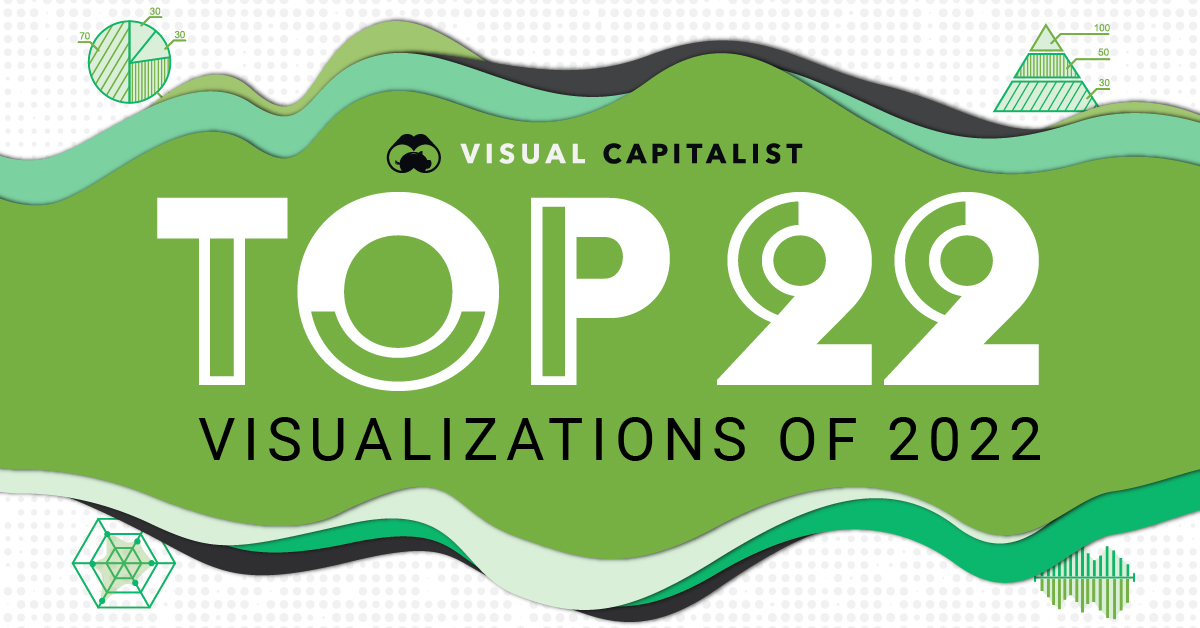Top 22 Visualizations of 2022 Unveiled
Core Concepts
The author showcases the top 22 visualizations of 2022, combining art, data, and storytelling to make sense of global events and trends.
Abstract
The content presents a collection of the top 22 visualizations of 2022 that cover a wide range of topics from the global economy to Earth's seasons, military capabilities, music streaming, and more. Each visualization is carefully crafted to provide insights and spark discussions on various significant issues.
Customize Summary
Rewrite with AI
Generate Citations
Translate Source
To Another Language
Generate MindMap
from source content
Visit Source
www.visualcapitalist.com
Our Top 22 Visualizations of 2022 - Visual Capitalist
Stats
IMF projected global economic output to reach $104 trillion in 2022.
China expected to overtake the U.S. as the world's economic leader by 2030.
Saudi Arabia contributes one-third of OPEC production.
San Jose identified as the most expensive city for home ownership in the U.S.
Vietnam has the largest military worldwide when including reserves and paramilitary numbers.
Over 119 tonnes of coal used per individual in an average American's lifetime.
Spotify has over 450 million users across 183 markets.
India's population set to surpass China's in 2023.
Quotes
"We crunched the numbers and visualized the data to see if money really does buy happiness."
"Many people think the seasons are dictated by Earth’s proximity to the Sun, but this isn’t the case."
"The conflict in Ukraine had broader implications on the global economy."
Key Insights Distilled From
by Nick Routley at www.visualcapitalist.com 12-23-2022
https://www.visualcapitalist.com/our-top-22-visualizations-of-2022/
Deeper Inquiries
How can visualizations like these impact public understanding and decision-making processes?
Visualizations play a crucial role in enhancing public understanding by presenting complex data in a visually appealing and easily digestible format. They have the power to simplify intricate information, making it accessible to a broader audience. By combining art, data, and storytelling as seen in the top 22 visualizations of 2022, individuals can grasp key insights more effectively. This enhanced comprehension can lead to informed decision-making across various sectors such as business, policy-making, and personal finance. Visualizations also have the potential to spark discussions and drive engagement on important issues by presenting data in a compelling manner.
What are potential drawbacks or limitations of relying heavily on data visualizations for information?
While data visualizations offer numerous benefits, there are certain drawbacks associated with relying heavily on them for information. One limitation is the risk of oversimplification or misinterpretation of complex data when condensed into visuals. Without proper context or explanation, viewers may draw incorrect conclusions from the presented information. Additionally, biases in data selection or visualization design could inadvertently influence perceptions and decisions based on incomplete or misleading representations. Another challenge is ensuring accessibility for all audiences, including those with visual impairments who may struggle to interpret graphical content.
How might advancements in technology influence future trends in data visualization?
Advancements in technology are poised to revolutionize the field of data visualization by introducing new tools and techniques that enhance capabilities and user experiences. The integration of artificial intelligence (AI) algorithms can automate aspects of visualization creation process, enabling faster generation of interactive graphics tailored to specific datasets. Virtual reality (VR) and augmented reality (AR) technologies offer immersive ways to explore complex datasets spatially, providing users with interactive environments for deeper analysis. Furthermore, developments in machine learning algorithms can enable predictive analytics within visualizations, allowing users to forecast trends based on real-time data inputs. Overall, technological advancements will continue shaping future trends in data visualization towards more dynamic, personalized, and impactful presentations of information.
0
